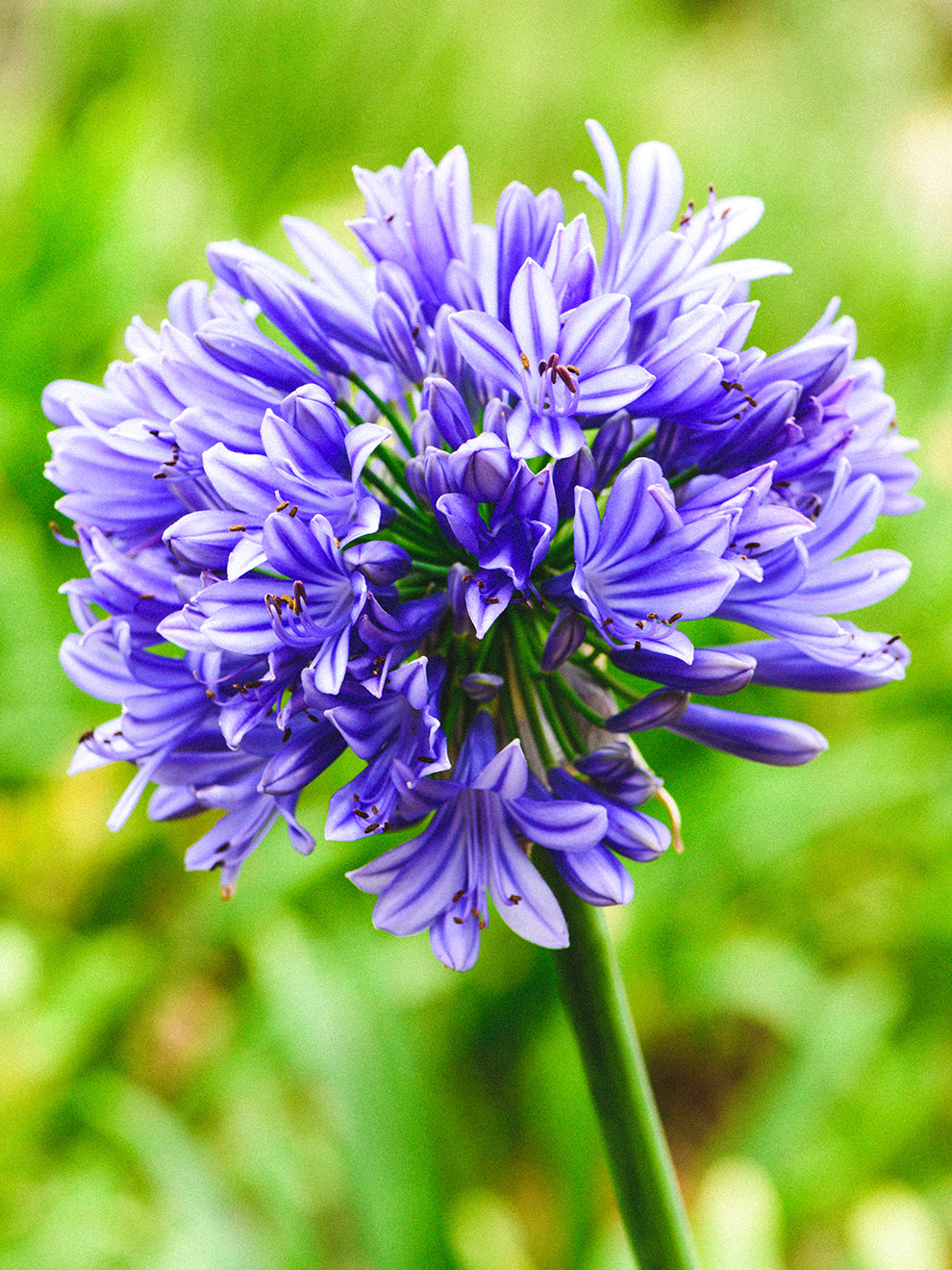Typical Agapanthus Problems and How to Address Them
Typical Agapanthus Problems and How to Address Them
Blog Article
Grasping the Art of Agapanthus Care: Crucial Actions for Healthy And Balanced Growth and Dynamic Blooms
In the realm of cultivation, the cultivation of agapanthus stands as a gratifying endeavor for those that look for to support these classy blooming plants. With their striking flowers and graceful vegetation, agapanthus has caught the attention of gardeners worldwide. Nevertheless, achieving optimum growth and dynamic blooms needs a nuanced method that encompasses different necessary actions. From picking the appropriate variety to mastering trimming methods, the journey towards growing flourishing agapanthus plants is multifaceted and holds the essential to unlocking the full capacity of these agricultural gems.

Picking the Right Agapanthus Range

When picking the right Agapanthus range for your yard, take into consideration elements such as climate suitability, bloom color, and growth habit. In addition, think about the environment in your region to make certain the Agapanthus selection you select can flourish in your details conditions. Understanding the development practice of various Agapanthus varieties is critical for appropriate positioning within your garden.
Perfect Planting Conditions
Thinking about the optimum environmental requirements is necessary for successful Agapanthus farming. Agapanthus prospers in well-draining soil with a slightly acidic to neutral pH degree. When growing, select a place that receives full sunshine to partial color. In hotter climates, supplying some mid-day color can protect against scorching of the leaves. Agapanthus plants are sensitive to chilly temperatures and need to be safeguarded from frost throughout winter months.
To make certain healthy and balanced development and lively blooms, plant Agapanthus light bulbs at a deepness of regarding 2-4 inches and space them 8-12 inches apart. Adding raw material, such as compost, to the soil can boost drain and fertility, promoting durable root advancement. Mulching around the base of the plants aids keep dampness and suppresses weed growth. Regular watering is critical, particularly throughout the expanding season, to maintain the dirt continually wet but not saturated.
Watering and Feeding Tips
Maintaining correct moisture degrees and providing necessary nutrients are essential components in the care regimen for Agapanthus plants. When it comes to sprinkling Agapanthus, it is important to strike an equilibrium. These plants favor regularly damp soil yet are at risk to root rot if overwatered.
Feeding Agapanthus is necessary for advertising healthy growth and prolific flowers. Apply a balanced fertilizer, such as a 10-10-10 formula, in her explanation the very early springtime as brand-new development emerges. Repeat this application every 6-8 weeks throughout the expanding season. Prevent extreme fertilizing, as it can lead to lavish foliage at the cost of blossoms. Constantly follow the producer's instructions for proper dilution and application techniques. By following these watering and fertilizing suggestions, you can guarantee your Agapanthus plants flourish and create lively, resilient blooms.
Trimming Techniques for Agapanthus
Trimming Agapanthus plants at the proper times and with appropriate methods is essential for maintaining their health and promoting optimum growth and blooming. The excellent time to prune Agapanthus is in late winter season or early springtime before new development arises. Beginning by eliminating any type of yellowing or dead fallen leaves near the base of the plant. Cut them as close to the ground as possible without harming the emerging shoots.
Deadheading spent blossoms can likewise redirect the plant's energy right into producing more blooms rather than setting seeds. If you want to gather seeds for proliferation, leave some blossoms to mature and dry on the plant.
Keep in mind to use clean, sharp devices to make specific cuts and lower the danger of introducing illness. Agapanthus. Normal trimming will certainly assist maintain your Agapanthus looking healthy and balanced and cool while guaranteeing an abundant screen of gorgeous blooms
Handling Typical Bugs and Illness
After making certain correct pruning techniques for Agapanthus, it is essential to resolve usual pests and conditions that can influence the wellness and vigor of these plants. Agapanthus plants are normally durable but can still succumb particular problems. One usual parasite that affects Agapanthus is the Agapanthus gall midget. This little, orange fly lays its eggs in the hop over to here foliage, resulting in altered development and flower buds that fall short to open up. To battle this insect, prune sites and ruin any kind of afflicted plant parts and consider utilizing insecticidal soap.
Additionally, Agapanthus plants can experience from origin rot if they are grown in badly draining soil. By being cautious and taking punctual activity against bugs and conditions, you can aid your Agapanthus plants grow and generate vivid flowers. Agapanthus.

Conclusion
Finally, understanding the art of agapanthus treatment includes choosing the right variety, providing ideal growing problems, appropriate watering and fertilizing, proper pruning strategies, and dealing with common parasites and illness. By adhering to these essential actions, you can make sure healthy and balanced development and dynamic blossoms for your agapanthus plants. Keep in mind to routinely monitor and preserve your plants to promote their overall wellness and long life.
To make certain healthy and balanced development and vibrant flowers, plant Agapanthus bulbs at a depth of about 2-4 inches and area them 8-12 inches apart. By adhering to these watering and fertilizing tips, you can ensure your Agapanthus plants grow and produce vivid, resilient flowers.
One usual pest that affects Agapanthus is the Agapanthus gall midge. Additionally, Agapanthus plants can endure from origin rot if they are grown in improperly draining dirt. By following these crucial steps, you can make certain healthy development and vivid blossoms for your agapanthus plants.
Report this page